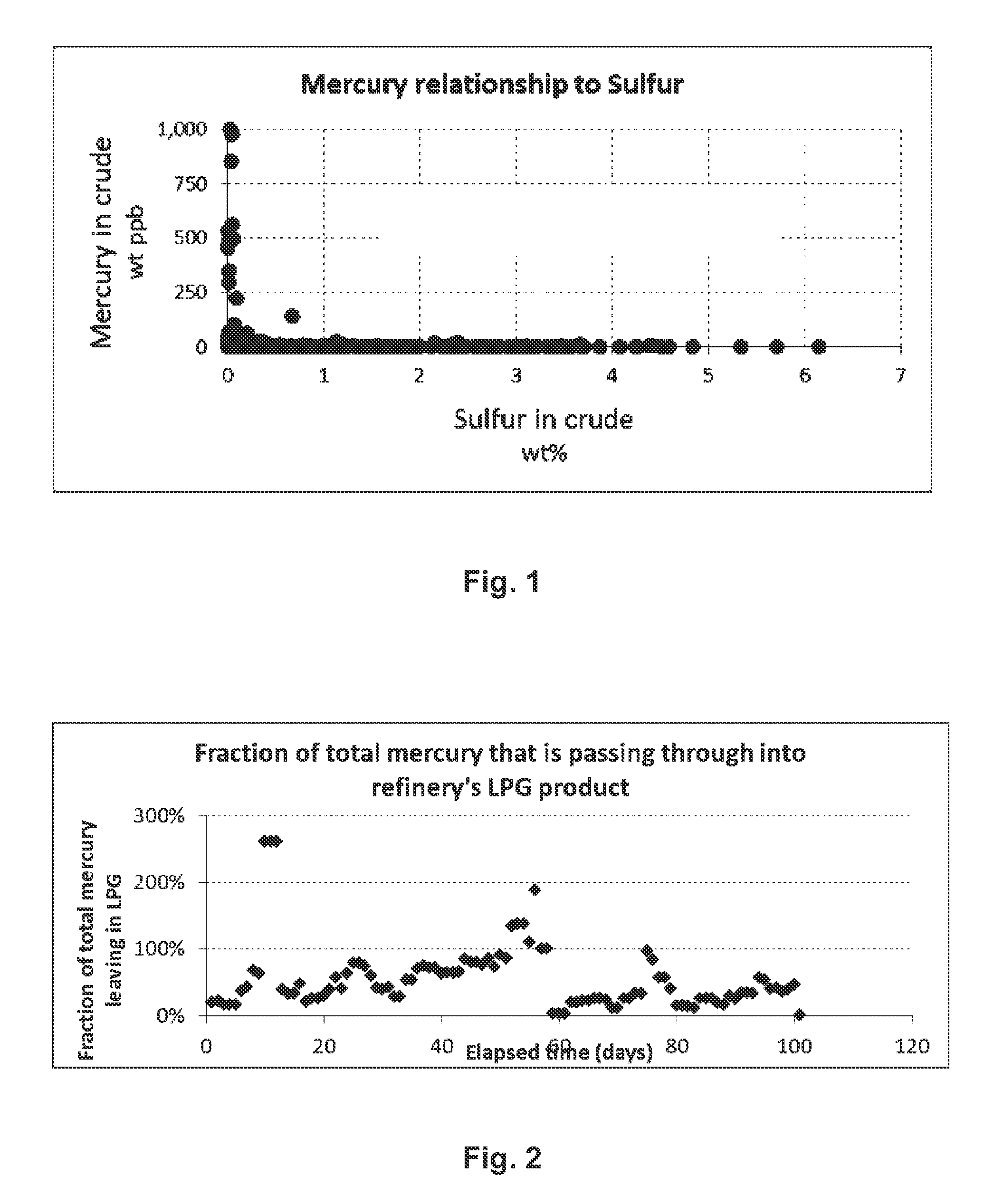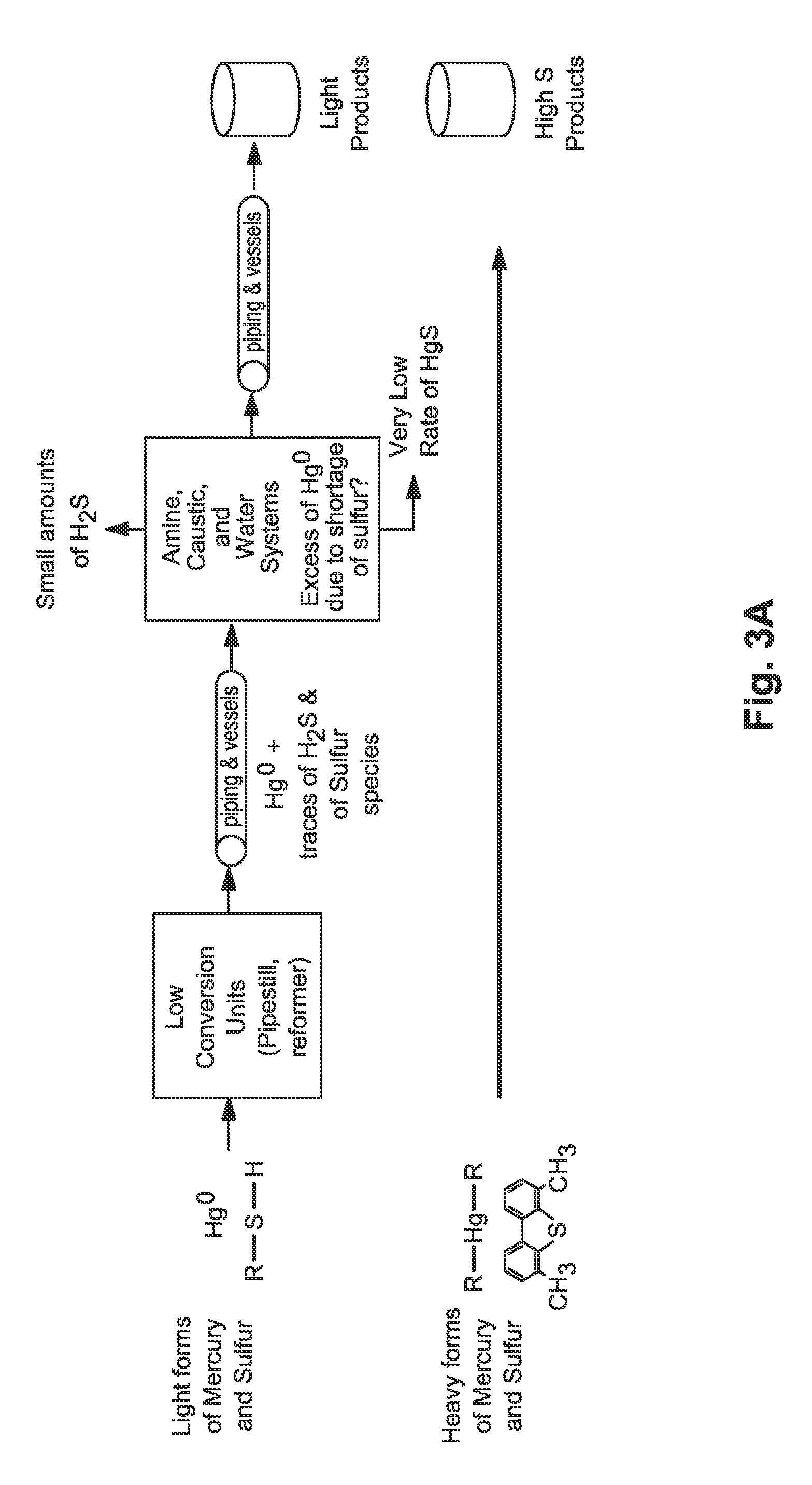Petroleum refinery mercury control
a petroleum refinery and mercury technology, applied in the direction of non-metal refining, raffination to eliminate heteroatoms, etc., can solve problems such as economic problems that may be more problematic, and achieve the effect of simple management methods
- Summary
- Abstract
- Description
- Claims
- Application Information
AI Technical Summary
Benefits of technology
Problems solved by technology
Method used
Image
Examples
Embodiment Construction
[0020]FIG. 1 is based on analyses of over 400 crude oils for both mercury and sulfur from all regions and major producers. The Figure shows that there is a strong relationship between mercury and sulfur in crude oil: only crude oils that are very low in sulfur—for example, less than 0.25 wt % sulfur—have any tendency to be high in mercury. The data includes materials that are known as “condensates” within the crude trading market; it has been found that the sulfur / mercury relationship is no different for these materials.
[0021]It has also been found that refineries that exclusively run low sulfur crudes are prone to have significant amounts of mercury in their hydrocarbon products and that the product most affected is commonly known as LPG (liquefied petroleum gas), a product that is rich in propane and butane. FIG. 2 shows that there are times when LPG product, on a given day, can contain more mercury than is being brought into the refinery (i.e. LPG contains more than 100% of the r...
PUM
| Property | Measurement | Unit |
|---|---|---|
| concentrations | aaaaa | aaaaa |
| boiling | aaaaa | aaaaa |
| concentration | aaaaa | aaaaa |
Abstract
Description
Claims
Application Information
 Login to View More
Login to View More - R&D
- Intellectual Property
- Life Sciences
- Materials
- Tech Scout
- Unparalleled Data Quality
- Higher Quality Content
- 60% Fewer Hallucinations
Browse by: Latest US Patents, China's latest patents, Technical Efficacy Thesaurus, Application Domain, Technology Topic, Popular Technical Reports.
© 2025 PatSnap. All rights reserved.Legal|Privacy policy|Modern Slavery Act Transparency Statement|Sitemap|About US| Contact US: help@patsnap.com



